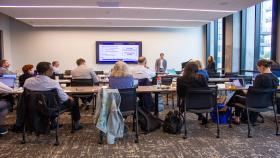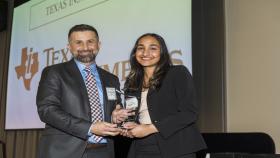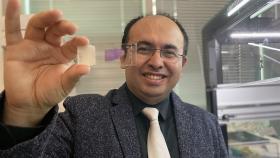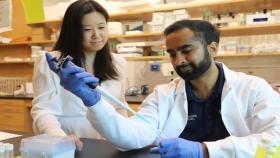Tech’s latest interdisciplinary research facility, the Engineered Biosystems Building (EBB), is now open and illuminated on 10th Street. The past several months have been a flurry of activity as researchers and faculty members relocated into the new space and started breathing life into it.
But what exactly does it take to move a lab?
“You would think that you could just get a mover and ship everything and be done, and that hasn’t been the case,” said Erin Kirshtein, who manages research projects and grants for Associate Professor Thomas Barker’s Matrix Biology and Engineering Lab in the Wallace H. Coulter Department of Biomedical Engineering. “Every little section has its own little piece that needs multiple hands.”
Read more about what it takes to move the labs that produce some of the world's top research.
Media Contact
Kristen Bailey
Institute Communications
Keywords
Latest BME News
Jo honored for his impact on science and mentorship
The department rises to the top in biomedical engineering programs for undergraduate education.
Commercialization program in Coulter BME announces project teams who will receive support to get their research to market.
Courses in the Wallace H. Coulter Department of Biomedical Engineering are being reformatted to incorporate AI and machine learning so students are prepared for a data-driven biotech sector.
Influenced by her mother's journey in engineering, Sriya Surapaneni hopes to inspire other young women in the field.
Coulter BME Professor Earns Tenure, Eyes Future of Innovation in Health and Medicine
The grant will fund the development of cutting-edge technology that could detect colorectal cancer through a simple breath test
The surgical support device landed Coulter BME its 4th consecutive win for the College of Engineering competition.







